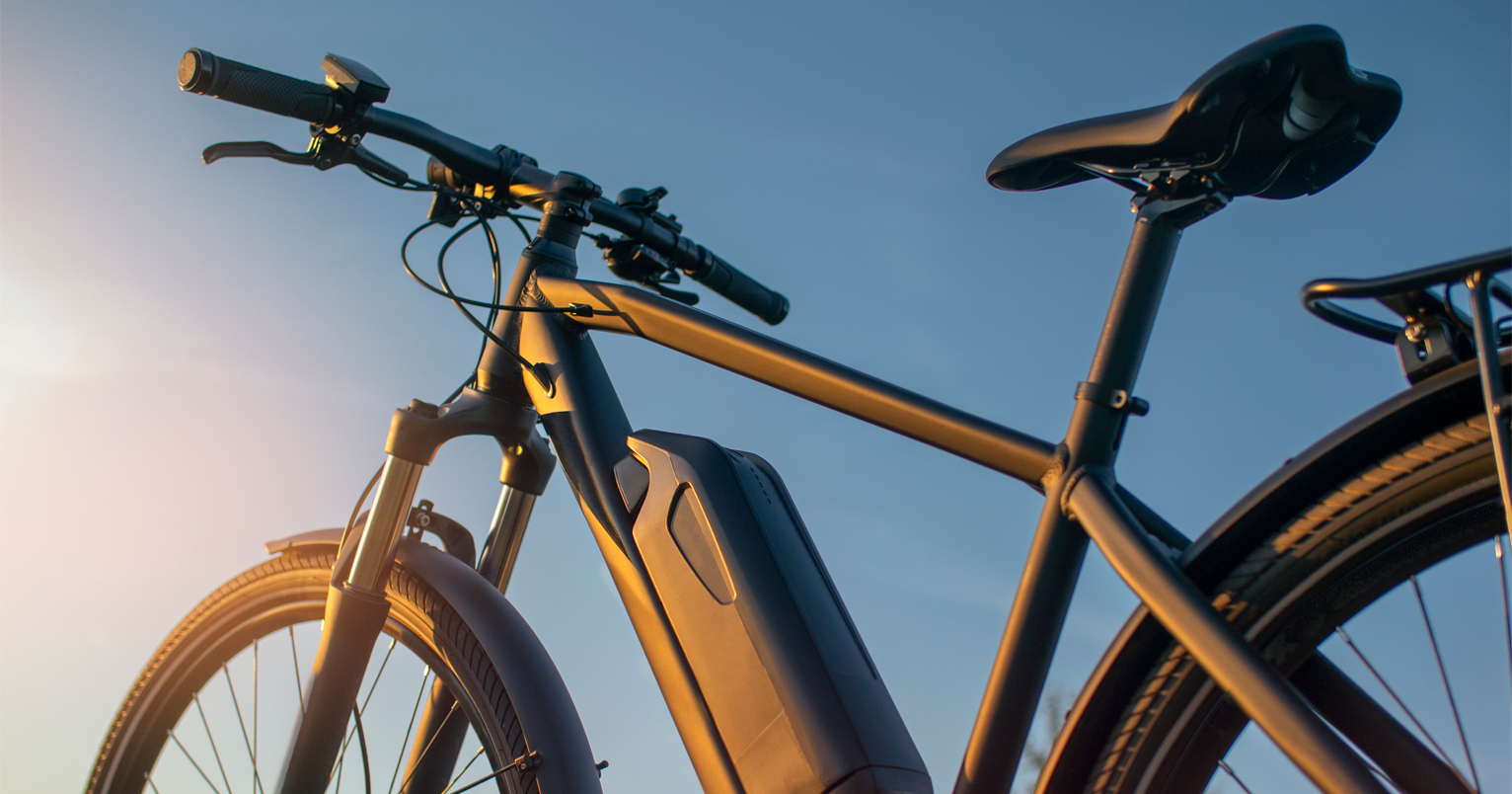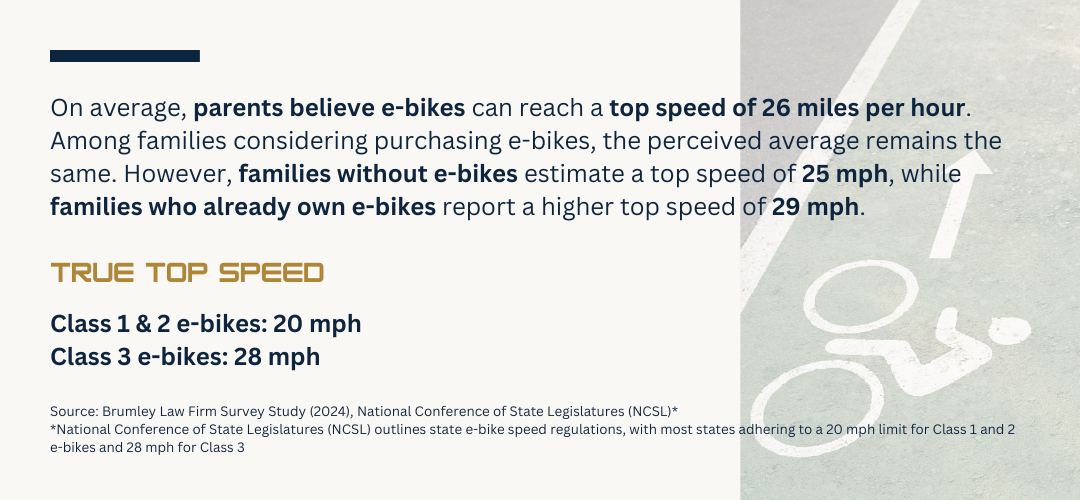Are E-Bikes Safe for Kids? Parents Weigh In

Key Takeaways:
- On average, parents consider 14 the most appropriate age for children to receive their first e-bike.
- 35% of parents wouldn’t buy their child or teenager an e-bike before they turn 18, and 22% believe they are completely inappropriate for minors.
- 40% of parents believe e-bikes are less safe than regular bikes, while 17% believe they are safer.
- 1 in 5 parents think middle schools should implement complete bans on e-bikes.
- Parents were nearly three times more likely to support complete e-bike bans in middle schools compared to high schools.
- 2 in 5 parents believe their local government should impose strict regulations on e-bikes, such as age limits, mandatory helmet use, and coursework.
- The top concern parents saw from children using e-bikes was the “risk of accidents or injuries”, while the top benefit was “increased independence.”
E-bikes are becoming increasingly popular among families, offering an exciting and eco-friendly way to get around. But with this trend come critical questions about safety, especially for younger riders. Are e-bikes a practical option for kids, or do the risks call for stricter oversight? Between 2017 and 2022, the Consumer Product Safety Commission recorded 53,200 emergency room visits from e-bike accidents, with e-bikes reporting the highest fatality rate among micromobility products in the same time period. To better understand these concerns and how parents perceive them, we surveyed over 1,000 parents, exploring topics like safety perceptions, age recommendations, school policies, and local government regulations. While some may believe it’s solely a parent’s responsibility to ensure their child’s safety, others may argue for a standardized approach to protect everyone. The responses reveal a nuanced debate over how to responsibly introduce e-bikes to the next generation.
Table of Contents
- What is the Most Appropriate Age to Buy Your Child an E-Bike?
- Are E-Bikes Safer Than Regular Bikes?
- Should External Institutions Regulate E-Bike Use Among Minors?
- What Penalties Are Appropriate for E-Bike Violations in Schools?
- Should Local Governments Enforce E-Bike Regulations?
- Parents Weigh the Pros and Cons of E-Bikes
- Parental Concerns Regarding E-Bikes
- Potential Benefits of E-Bikes for Children
- Striking a Balance Between Safety and Growth
- Methodology
What Age Should You Buy Your Child an E-Bike?
Determining the right age for kids to ride e-bikes is a hot topic among parents. From safety comparisons with regular bikes to the percentage of parents willing to buy an e-bike for their child, opinions vary widely on when—and if—children should start riding.

On average, parents felt that 14 years old was the most appropriate minimum age for children to get their first e-bike. When we compare this to the traditional age range that kids learn to ride a bike, it is clear that e-bikes are regarded as a vehicle that requires maturity. While the majority of parents (64%) would consider buying their child an e-bike before they turn 18, 35% reported they would not. Moreover, 22% of respondents believed e-bikes were entirely inappropriate for minors.

Are E-Bikes Safer Than Regular Bikes?
When examining parents’ perceptions of e-bike safety compared to regular bikes, 43% of parents considered them comparable, while 17% surprisingly believed e-bikes were safer. However, a significant portion of parents viewed e-bikes as less safe. While traditional bikes could reach speeds similar to e-bikes, the average cyclist—particularly younger riders with less experience—tend to ride at a more moderate 10 to 15 mph. E-bikes, on the other hand, allow riders to travel faster and farther, which raise concerns among parents. Even though the actual top speed of most e-bikes range from 20 to 28 mph, depending on the class, parents who didn’t own e-bikes estimated an average top speed of 25 mph, while those who did own e-bikes reported an average of 29 mph. This suggests that parents’ concerns about speed are not rooted in misinformation but rather reflect a perception that higher speeds increase risk—especially when greater distances are involved, potentially leading children to navigate busy roads, interact with more traffic, and face additional hazards.
Should External Institutions Regulate E-Bike Use Among Minors?
As e-bikes become increasingly common, many parents may have noticed more young riders on their daily commutes. While some may feel uneasy about this trend, it raises an important question: should external institutions, like schools and local governments, be stepping in to regulate e-bike use among minors for safety?

With colleges around the nation banning e-bikes, it’s easy to imagine this trend extending to other educational levels. Twenty percent of parents responded that e-bikes should be completely banned in middle schools, which was three times higher than those who supported a similar ban for high schools. On the other hand, 80% of parents were open to middle schoolers using e-bikes, either with full permission (38%) or after meeting certain criteria (42%), such as parental consent or completing a safety course. In contrast, 93% of parents responded that high school students should be allowed to ride e-bikes to school, with 35% agreeing to some form of approval process. This aligned with the average age parents considered appropriate for minors to start using e-bikes, which was 14 years old—right at the transition between middle and high school. When examining parental views on the middle school ban, those who believed e-bikes should be completely banned in middle schools reported that 16 years old was the most appropriate age for minors to start using e-bikes. Those in favor of a ban with exceptions suggested 15 years old, while parents who opposed any ban thought 14 years old was the ideal age.
What Penalties are Appropriate for E-Bike Violations in Schools?
Next, we asked parents what penalties they believed would be appropriate for e-bike use in schools, should bans be implemented.
For single violations, 63% of parents believed a warning would be sufficient. About one in four parents felt that detention should also be administered, while 18% believed a fine imposed on the student’s family would be appropriate. In contrast, for repeated violations, half of the parents thought both detention and a fine would be fair consequences, with only 9% believing a warning would suffice. A significant 39% of parents reported that suspension would be an appropriate action for repeated e-bike violations.
Should Local Governments Regulate E-Bike Use?
Now that we’ve explored what parents believe schools should do in response to the growing use of e-bikes among minors, we turned to ask how involved local governments should be in regulating e-bike use.
Forty-one percent of parents believed that local governments should implement strict regulations, which may look like speed limits, age limits, helmet requirements, course requirements, or a license. Meanwhile, 16% felt there should be no government intervention, likely believing that it is the parents’ responsibility to teach their children safe e-bike use. A more nuanced stance was taken by 43% of parents, who believed there should be some government involvement, such as establishing basic guidelines like parental consent and speed limits. This could also include providing resources to help parents better understand how to ensure their children’s safety. One respondent noted “as a parent, and based on where we live with the people that drive around here, I would never let my teenagers drive around on one of these. I do believe this is a parent issue, not a government issue though.”
Parents Weigh the Pros and Cons of E-Bikes
As we’ve seen, parents have varying opinions on the safety and regulation of e-bikes, especially regarding their use by minors. While some feel that external institutions, like schools and local governments, should take an active role in regulating e-bike use, others emphasize parental responsibility. To further understand the broader perspective, we asked parents to weigh the pros and cons of e-bikes, taking into account not only safety concerns but also the potential benefits of e-bike use for children.
Parental Concerns Regarding E-Bike Use
The top concern parents have regarding e-bike use is the risk of accidents or injuries, with 85% of parents citing this as their primary worry. E-bikes are heavier than regular bikes, and the motor assistance allows for faster speeds and quicker acceleration, which can reduce reaction time and increase the likelihood of accidents. If you’d like to better understand the legal aspects of e-bike accidents, you may wish to review general consumer safety and legal resources, or consult with a professional for guidance tailored to your situation. Another significant concern, ranking second, is the potential for theft. Given the higher value of e-bikes compared to traditional bikes, parents worry that their children or their children’s bikes could become targets for robbery. Third on the list is the fear that minors may struggle to properly follow road rules while riding e-bikes. Other write-in concerns expressed by parents included the risk of battery fires and the belief that e-bikes may encourage laziness by offering motorized assistance—a common misconception disproven by research.

Benefits of E-Bike Use Among Children
The top benefit that parents saw in e-bike use among their children was increased independence, with 55% of parents highlighting this advantage. Interestingly, parents who opposed middle school e-bike bans were 57% more likely to mention this benefit compared to those who supported a complete ban, suggesting that this benefit may have been considered in their decision-making. While many parents remain concerned—particularly about the risk of physical harm to their child—a majority can acknowledge that riding e-bikes presents challenges that children, when parents deem it the right time, can learn to navigate. This process can foster maturity, responsibility, and heightened awareness, all of which contribute to positive development in children. Additional benefits that parents recognized include the eco-friendly nature of e-bikes compared to driving (47%) and their convenience (46%).
Striking a Balance Between Safety and Growth
As e-bikes become an increasingly popular mode of transportation for minors, parents are grappling with how to balance the benefits and risks associated with their use. While safety concerns—such as the risk of accidents and injuries—dominate the discussion, many parents also recognize the positive impact e-bikes can have on their children’s development. Whether it’s through school policies, local government regulations, or parental guidance, it’s clear that e-bike safety is a complex issue that requires careful consideration and, most importantly, open dialogue between parents, schools, and communities. As this trend continues to evolve, finding a middle ground that ensures both safety and personal growth for young riders will be crucial.
Methodology
We surveyed 1,011 parents on their perceptions about e-bike safety for minors. The survey implemented filters to solely target parents who had children between the ages of 5 and 18. Among parents, 59% were female, 41% were male, and 1% were non-binary. By generation, 1% were Baby Boomers, 36% were Gen X, 59% were Millennials, and 3% were Gen Z. Furthermore, 50% of respondents lived in the suburbs, 22% lived in big cities, 14% lived in rural areas, and 14% lived in small towns.
Fair Use Statement
If you know someone interested in e-bike safety for kids, feel free to share this study with them. Just be sure to credit the article and link back to the original source when sharing.